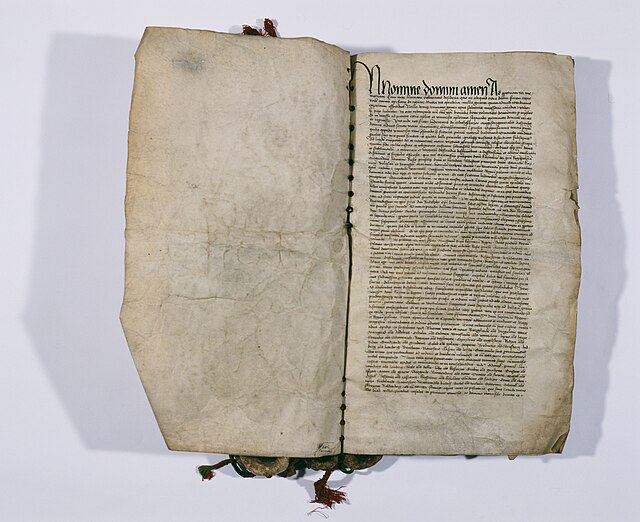Polish–Lithuanian–Teutonic War
The Polish–Lithuanian–Teutonic War, also known as the Great War, occurred between 1409 and 1411 between the Teutonic Knights and the allied Kingdom of Poland and Grand Duchy of Lithuania. Inspired by the local Samogitian uprising, the war began with a Teutonic invasion of Poland in August 1409. As neither side was ready for a full-scale war, Wenceslaus IV of Bohemia brokered a nine-month truce.
Battle of Grunwald (1878)
The battle as depicted in the Berner Chronik of Diebold Schilling
Castle of Marienburg, capital of the Teutonic Knights
Peace of Thorn
State of the Teutonic Order
The State of the Teutonic Order was a theocratic state, located along the southeastern shore of the Baltic Sea in northern Europe. It was formed by the knights of the Teutonic Order during the early 13th century Northern Crusades in the region of Prussia. In 1237, the Livonian Brothers of the Sword merged with the Teutonic Order of Prussia and became known as its branch — the Livonian Order. At its greatest territorial extent during the early 15th century, the State encompassed Chełmno Land, Courland, Gotland, Livonia, Estonia, Neumark, Pomerelia, Prussia and Samogitia.
The Battle of Grunwald (1410) marked the start of decline of the State of the Teutonic Order (19th-century painting by Jan Matejko)
The Polish–Teutonic peace treaty of 1466 made the Teutonic state a fief of the Kingdom of Poland
The Prussian Homage of 1525 established Ducal Prussia as a vassal duchy of the Kingdom of Poland, in place of the State of the Teutonic Order






